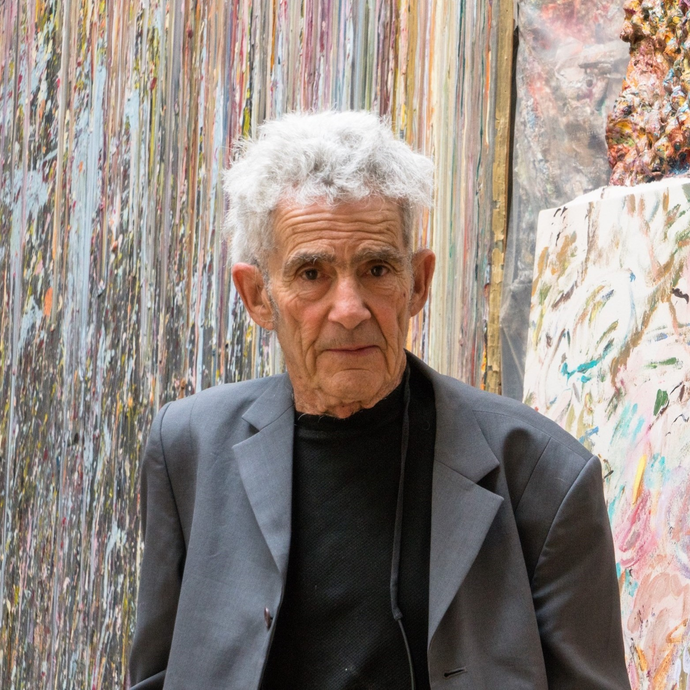
Larry Poons
Larry Poons, an American abstract painter, is closely linked with various artistic movements, including Op Art, Hard-edge painting, Color Field painting, Lyrical Abstraction, and Abstract Expressionism.
Biography of Larry Poons
Born in Tokyo, Japan, in 1937, Larry Poons currently resides and works in New York City. Initially pursuing a music career, he attended the New England Conservatory of Music from 1955 to 1957. However, after encountering Barnett Newman's exhibition at French and Company in 1959, he redirected his focus to visual arts, enrolling at the School of the Museum of Fine Arts, Boston, and later studying at the Art Students League of New York.
During the early 1960s, Poons, alongside artists like Donald Judd, Claes Oldenburg, and Lucas Samaras, was represented by the Green Gallery. He later exhibited with Leo Castelli in the latter part of the decade. While he exhibited with optical artists in 1965, Poons's distinct style evolved, garnering attention for its unique approach to abstraction.
In 1968, Poons gained recognition when his painting "Brown Sound" was featured on the cover of Artforum magazine. His prominence in the art world led to appearances in significant documentaries, including Emile de Antonio's "Painters Painting: The New York Art Scene 1940-1970" (1972) and Hollis Frampton's "Manual of Arms" (1966). Additionally, he was depicted in Andy Warhol's "Portrait of the Artists" (1967).
Throughout his career, Poons has also been involved in teaching, serving as a faculty member at The Art Students League from 1966 to 1970 and returning in 1997 to continue teaching at the institution.
Evolution of Larry Poons' Art Style
In the 1960s, Larry Poons gained prominence with his distinctive style characterized by paintings featuring circles and ovals set against vibrant, solid backgrounds. While initially associated with optical artists in 1965, by 1966, he transitioned towards a more expressive and painterly abstraction, moving away from strict optical art techniques.
Poons became renowned for his lyrical color paintings, which made their debut at prestigious institutions like the Whitney Museum of American Art and the Museum of Modern Art in New York during the mid-1960s. Embracing new artistic avenues, he explored the surface effects of paint on canvas. This exploration led him to experiment with pouring, sloshing, and dripping paint onto canvases—initially on the floor and later affixed to the wall—to create dynamic and visually captivating compositions.
Years:
Born in 1937
Country:
Japan, Tokyo
Gallery: